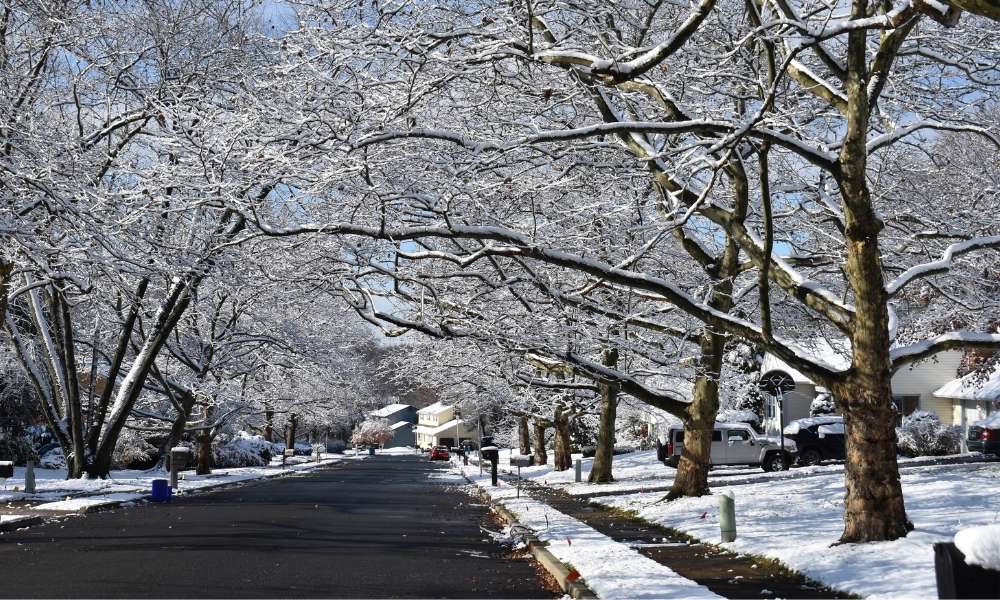Winterizing Your Home in New Jersey
Winterizing your home is very important. It should be done not only to avoid claims, but also to decrease your power bills. An example of a claim is water damage from burst pipes may be covered by your homeowners’ insurance policy. But failing to proactively drain these items qualifies as homeowner negligence. The best time to winterize your home is during the fall.
Here is a checklist to make sure that you are maintaining your property while being proactive in avoiding losses and increased costs during the winter months.
Winterization Checklist
PIPES: Make sure that your pipes are properly protected. If you have indoor pipes on an exterior wall, you may need to wrap the pipe with insulation to avoid freezing. If a pipe freezes, you risk the chance of it cracking, and then once the ice thaws the pipe will start leaking or may burst. Also don’t forget to turn off the water supply to all exterior spouts and drain all spigots, hoses and sprinkler lines.
DOORS/WINDOWS: Weatherproofing your home can make such a difference in the cost of electricity, oil or gas. Now is the time to install those storm doors and windows that will keep the cold air out and the heat in. You can also install plastic or heavy-duty insulated curtains over your windows. In addition, if you can see light coming in under the door, cold air will come in as well. It is good to install a door sweep, which helps create a seal and keep the cold air out.
FIREPLACE: Fireplaces provide such warmth and comfort during the colder months, but they can also cause damage if you don’t maintain them properly. If you have a fireplace, it is best to have it inspected and cleaned every year. If there are animal nests, creosote or soot buildup, you will want to be sure to clean it out prior to having your first fire of the season. A buildup of such items can catch fire as embers float up your chimney, or can cause a backdraft of smoke into the home if there is not enough space for it to escape from the chimney. If your fireplace is wood burning, it is also good maintenance to vacuum or sweep out any accumulated ash from the firebox.
GUTTERS: Cleaning gutters should be a year-round home maintenance item, however, it is most important to inspect and clean them after the last leaves have fallen in autumn. Cleaning the gutters of leaves and other debris prior to the winter months is the best way to prevent clogging and will allow melting snow to drain properly.
OTHER OPENINGS: Besides doors and windows, cold air can seep through wherever there is an opening between the interior and exterior walls. Caulk and forms of insulation are the best solutions to sealing these openings. Caulk can help to seal up cracks around window and door jambs. Foam outlet protectors can be used in outlets where you can feel the cold air pouring in. Perhaps the area where most heat escapes is the attic. Making sure that your attic is properly insulated will help keep heat in.
THERMOSTAT: The Department of Energy suggests that you keep your thermostat at 68 degrees when you are home. It is also a good idea to lower your thermostat a few degrees while you are away or sleeping in order to keep bills down. You can get a programmable thermostat that will let you customize your heat settings so it runs more efficiently and takes a break when it’s not needed.
FURNACE: You should be switching out your furnace filter every 3 months. Over time, the filter will collect dust, pollens, trapped lint, etc. The clogged air filter will make the furnace work harder and run longer in order to heat your home. This will not only increase your bill but will also shorten the life of your furnace.
ROOF: Roof maintenance is very important all year round; however the weather can be especially rough on your roof in the winter. Before winter, you should look for broken or missing shingles, clogged valleys, damaged flashing, or other deterioration. Be sure to clear debris from the roof and cut back overhanging branches that can drop and damage the shingles and gutters. Check the attic ceiling to ensure that there is no staining from water leakage. It is also a good idea to check the ventilation in the attic to be sure that it is properly ventilated to avoid mold and mildew.
STOCK UP: Be ready for the next winter storm by making sure you have all of the necessary staples on hand. During colder months, and especially winter storms, it is necessary to have these items in stock at your home: a snow shovel, ice scraper, ice melt, flashlights, batteries, weather radio, emergency car kit, and in case of snow storm extra water and nonperishable food for family members and pets. Being prepared will make any inconvenience caused by a storm more tolerable.
Winterizing your home in the fall ensures that you have done everything you can to keep heating costs down, avoid losses, and enjoy the winter months.
